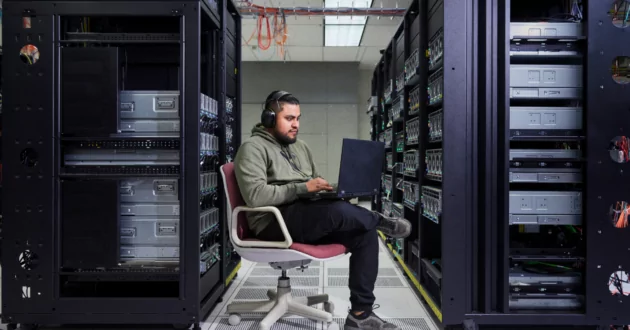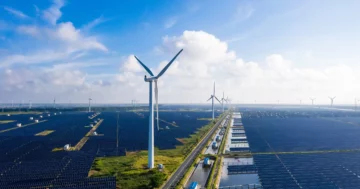
Legacy architectures of monolithic applications are difficult to change, expensive to maintain and may pose business risks. In December 2022, Southwest airlines cancelled more than 13,000 flights due to outdated software systems and IT infrastructure. This meltdown resulted in major losses for the airline company, damaging brand reputation. In contrast, Netflix pioneered the microservices architecture and is a market leader in online streaming, having more than 250 million subscribers across more than 200 countries.
Application modernization allows teams to develop reusable services that will ultimately increase the productivity and support accelerated delivery of new features and functions.
In our last blog post, we outlined our phased modernization approach, starting with runtime/operational modernization and then performing architectural modernization, refactoring monolith into microservices. In this blog, we will do a deep dive into architectural modernization of Java™ 2 Platform, Enterprise Edition (J2EE) applications and explain how IBM Mono2Micro™ tool accelerated the transformation.
The following diagram depicts generic J2EE architecture of a monolithic application. The different components — client-side UI, server-side code and database logic — are tightly coupled and are interdependent. These apps are deployed as a single unit and often result in longer churn time for small changes.

In architectural modernization, the very first step is to decouple client-side UI from server-side components and change the data exchange mechanism from Java objects to JSON. Backend for Front-End (BFF) services make it easier to convert Java objects to JSON or vice-versa. With the front end and backend separation, they can be modernized and deployed independently.

Next step in architectural modernization is to decompose backend code into individually deployable macroservices.

IBM Mono2Micro Tool accelerated the transformation of monolithic application into microservices. IBM Mono2Micro is an AI-based, semi-automated toolset that uses novel machine learning algorithms and a first-of-its-kind code generation technology to assist you in that refactoring journey to full or partial microservices. It analyzes the monolithic application in both a static and dynamic fashion and then provides recommendations for how the monolithic application can be partitioned into groups of classes that can become potential microservices
Here is how Mono2Micro works:

For one of the large financing applications in the CIO portfolio, Mono2Micro provided insights into the code complexity, uncovering the dependencies among classes across partitions and their interactions.
Mono2Micro saved more than 800 hours of manual effort to assess, redesign and develop the microservices architecture. Setting up Mono2Micro may take 3–4 hours to understand the different components and how these components work together to refactor your monolith. But it’s worth investing a few hours to save hundreds of hours for transforming your monolith to deployable microservices.
In nutshell, modernization tools like IBM Mono2Micro and Cloud Transformation Advisor drove faster transformation and promoted cost efficiency, but real differentiators are:
- Platform: Right sizing our infrastructure from bloated on-prem virtual machines to cloud-native containers
- People: Building community of developers to collaborate and create a future-ready culture
Modernization fosters innovation with business agility, enhances system security and simplifies data management. Most importantly, it improves developer productivity while providing cost-efficiency, resiliency and improved customer experience.
More from Automation

January 8, 2024
Event-driven architecture (EDA) enables a business to become more aware of everything that’s happening, as it’s happening
6 min read – In modern enterprises, where operations leave a massive digital footprint, business events allow companies to become more adaptable and able to recognize and respond to opportunities or threats as they occur. They can optimize their supply chains, create delightful, personalized experiences for their customers, proactively identify quality issues or intercept customer churn before it occurs. As a result, organizations that become more event-driven are able to better differentiate themselves from competitors and ultimately impact their top and bottom lines. Becoming…

December 21, 2023
Reshoring manufacturing to the US: The role of AI, automation and digital labor
5 min read – Reshoring manufacturing to the US has been a significant trend in recent years, driven by geopolitical tensions, supply chain disruptions, proximity to customers and markets, eco-system synergies and the need for positive impact on the domestic economy. However, reshoring presents several challenges—mainly workforce, technical and economic issues. AI, automation and digital labor can help tackle these challenges. For organizations willing to take these challenges head on and become Transformational Optimizers from the start, this is also an opportunity to skip…

December 19, 2023
Anomaly detection in machine learning: Finding outliers for optimization of business functions
5 min read – As organizations collect larger data sets with potential insights into business activity, detecting anomalous data, or outliers in these data sets, is essential in discovering inefficiencies, rare events, the root cause of issues, or opportunities for operational improvements. But what is an anomaly and why is detecting it important? Types of anomalies vary by enterprise and business function. Anomaly detection simply means defining “normal” patterns and metrics—based on business functions and goals—and identifying data points that fall outside of an…

December 18, 2023
Why you shouldn’t use Global Anycast DNS in China
3 min read – Anycast is a standard, table-stakes feature of every authoritative DNS service. It makes sense: inbound queries should always be routed to the best available servers—usually the ones that are geographically closest. Yet, there is one glaring exception: China. The internet in mainland China is walled off from the rest of the world. Any DNS query that crosses into or out of mainland China must pass through a series of filters and other controls before it can be passed along for resolution.…
IBM Newsletters
Get our newsletters and topic updates that deliver the latest thought leadership and insights on emerging trends.
Subscribe now More newsletters
- SEO Powered Content & PR Distribution. Get Amplified Today.
- PlatoData.Network Vertical Generative Ai. Empower Yourself. Access Here.
- PlatoAiStream. Web3 Intelligence. Knowledge Amplified. Access Here.
- PlatoESG. Carbon, CleanTech, Energy, Environment, Solar, Waste Management. Access Here.
- PlatoHealth. Biotech and Clinical Trials Intelligence. Access Here.
- Source: https://www.ibm.com/blog/ibm-cio-organizations-application-modernization-journey-mono2micro/
- :has
- :is
- :where
- $UP
- 000
- 1
- 10
- 19
- 200
- 2022
- 2023
- 2024
- 250
- 28
- 30
- 300
- 31
- 40
- 400
- 41
- 8
- 9
- a
- Able
- accelerated
- accelerates
- across
- activity
- Advertising
- AI
- airline
- Airlines
- algorithms
- All
- allow
- allows
- along
- also
- always
- among
- amp
- an
- analytics
- analyzes
- and
- anomaly detection
- any
- app
- Application
- applications
- approach
- apps
- architectural
- architecture
- ARE
- article
- AS
- assess
- assist
- At
- author
- Automation
- available
- aware
- back
- Backend
- BE
- become
- been
- before
- BEST
- Better
- between
- Blog
- blogs
- Blue
- board
- both
- Bottom
- brand
- Building
- business
- business functions
- but
- button
- by
- CAN
- carbon
- card
- Cards
- CAT
- Category
- Cause
- chain
- chains
- Chair
- challenges
- change
- Changes
- check
- China
- CIO
- circles
- CIS
- class
- classes
- closest
- code
- collaborate
- colleagues
- collect
- color
- community
- Companies
- company
- competitors
- complexity
- components
- Container
- continue
- contrast
- controls
- convert
- Cost
- countries
- coupled
- create
- CSS
- custom
- customer
- customer experience
- Customers
- damaging
- data
- Data Exchange
- data management
- data points
- data sets
- Database
- Date
- December
- deep
- deep dive
- Default
- defining
- definitions
- delightful
- deliver
- delivery
- dependencies
- deployed
- description
- Detection
- develop
- Developer
- developers
- different
- differentiate
- difficult
- digital
- discovering
- disruptions
- dive
- dns
- do
- Domestic
- driven
- due
- dynamic
- easier
- Economic
- economy
- edition
- efficiency
- effort
- emerging
- enables
- end
- Enhances
- Enter
- Enterprise
- enterprises
- essential
- Ether (ETH)
- events
- Every
- everything
- exception
- exchange
- Exit
- expensive
- experience
- Experiences
- Explain
- Fall
- false
- Fashion
- faster
- Feature
- Features
- few
- filters
- financing
- finding
- First
- Flights
- follow
- following
- fonts
- Footprint
- For
- fosters
- from
- front
- Front end
- full
- function
- functions
- generation
- generator
- geographically
- geopolitical
- get
- Global
- Green
- Grid
- Group’s
- Happening
- having
- head
- Heading
- headphones
- height
- help
- HOURS
- How
- However
- HTTPS
- Hundreds
- IBM
- ICO
- ICON
- identify
- identifying
- image
- Impact
- important
- importantly
- improved
- improvements
- improves
- in
- Increase
- independently
- index
- Individually
- inefficiencies
- Infrastructure
- Innovation
- insights
- interactions
- Internet
- into
- intrinsic
- investing
- issues
- IT
- January
- Java
- journey
- jpg
- json
- labor
- laptop
- large
- larger
- Last
- latest
- lead
- leader
- Leadership
- learning
- Leave
- like
- lines
- local
- locale
- logic
- longer
- looking
- losses
- machine
- machine learning
- Machines
- mainland
- mainland china
- maintain
- major
- make
- MAKES
- management
- manual
- manufacturing
- Market
- Market Leader
- Markets
- massive
- max-width
- May..
- means
- mechanism
- Meltdown
- microservices
- million
- min
- minutes
- Mobile
- Modern
- modernization
- Monolithic
- more
- most
- must
- Navigation
- Need
- Netflix
- New
- New Features
- Newsletters
- nothing
- novel
- now
- Nutshell
- objects
- occur
- of
- off
- Office
- often
- on
- ONE
- ones
- online
- operational
- Operations
- opportunities
- Opportunity
- optimization
- Optimize
- optimized
- or
- organizations
- Other
- our
- out
- outlined
- outside
- page
- pass
- passed
- patterns
- performing
- person
- Personalized
- Phased
- PHP
- pioneered
- platform
- plato
- Plato Data Intelligence
- PlatoData
- plugin
- points
- policy
- portfolio
- pose
- position
- positive
- Post
- potential
- presents
- primary
- productivity
- Promoted
- provided
- provides
- providing
- quality
- queries
- RARE
- Reading
- real
- recent
- recognize
- recommendations
- redesign
- Refactor
- reputation
- Resolution
- Respond
- responsive
- REST
- result
- resulted
- reusable
- right
- risks
- robots
- Role
- root
- Save
- saved
- Screen
- scripts
- security
- sense
- seo
- Series
- service
- Services
- Sets
- setting
- several
- shelves
- should
- significant
- simplifies
- simply
- single
- site
- Sitting
- small
- Software
- southwest airlines
- Sponsored
- squares
- standard
- start
- Starting
- static
- Step
- storage
- streaming
- subscribe
- subscribers
- supply
- supply chain
- Supply chains
- support
- SVG
- system
- Systems
- tackle
- Take
- teams
- Technical
- Technology
- tensions
- tertiary
- than
- that
- The
- the world
- their
- theme
- themselves
- then
- There.
- These
- they
- this
- thought
- thought leadership
- threats
- Through
- tightly
- time
- Title
- to
- together
- tool
- tools
- top
- topic
- Transformation
- transformational
- transforming
- Trend
- Trends
- two
- type
- types
- ui
- Ultimately
- understand
- unit
- Updates
- URL
- us
- use
- uses
- vary
- very
- Virtual
- W
- Walled
- we
- What
- What is
- while
- white
- why
- will
- willing
- with
- WordPress
- Work
- work together
- Workforce
- working
- works
- world
- worth
- written
- years
- yet
- you
- Your
- zephyrnet











